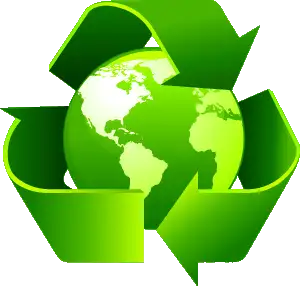Alternative Energy Fuels - Future Fuel Choices

Alternative energy fuels drive renewable power systems, integrating hydrogen, biofuels, and electricity with power electronics, smart grids, and energy storage for efficient conversion, decarbonization, and resilient distribution across modern electrical networks.
What Are Alternative Energy Fuels?
Alternative energy fuels are renewables—hydrogen, biofuels, electricity—supporting conversion and smart grid integration
✅ Power electronics convert DC/AC and manage grid-tied renewables.
✅ Fuel cells and hydrogen storage integrate with microgrids.
✅ Battery systems and EMS stabilize variable solar and wind.
Alternative energy fuels can help reduce harmful greenhouse gas emissions produced from traditional gasoline or diesel fuels. Using alternative energy fuels means that you might have to change your conventional vehicle in for a more environmentally-friendly ride. Is this true? Let's find out. To start, a quick primer on what alternative energy is can clarify terms and set expectations in practical terms.
Alternative Energy Fuels - Battery-electric Vehicles
Your first option is battery-electric vehicles (BEVs), which powered by motors that draw electricity from on-board storage batteries. These batteries act as an engine to propel the motor. Using electric vehicles presents a great potential to reduce greenhouse gas (GHG) emissions and smog-forming pollutants because pollution isn't produced from the tailpipe or through fuel evaporation. The vehicles can also have low overall (life-cycle) GHG emissions depending on the electricity source used to recharge the batteries. This option would require you to say goodbye to your conventional vehicle. When charged from renewable energy sources, BEVs can further minimize lifecycle emissions and operating costs.
Alternative Energy Fuels - Hybrid-electric Vehicles
If you don't necessarily want to give up your conventional vehicle, but still want the environmental and energy benefits of electric vehicles, then hybrid electric vehicles (HEVs) are your best option. HEVs are made up of a battery powered electric motor with combined with a conventional internal combustion engine. Instead of paying outrageous gas prices every time your gas tank nears the empty mark, a rapid refueling option recharges your conventional vehicle. If this alternative energy fuel option appeals to you then you'll be glad to know that many hybrid vehicle models are already widely available on the market, with many more manufacturers planning on introducing new hybrid electric/gasoline vehicles in the next few years. Many buyers also view HEVs as pragmatic alternative energy solutions that ease the transition away from full reliance on gasoline.
Alternative Energy Fuels - Fuel Cells and Hydrogen
If you are using a portable or a stationary power device, then fuel cells might be the ideal option for you. Electricity is generated in fuel cells electrochemically when hydrogen and oxygen are combined. Fuel Cells can produce zero or very low emissions depending on the source of the hydrogen. These energy-conversion devices can also utilize hydrogen and other fuels and, in the future, might be used for transportation applications. This alternative energy fuel source is also an option for vehicles and prototypes for hydrogen fuel cell vehicles that are currently in the works. But, unfortunately, barriers exist. A lack of a hydrogen distribution infrastructure has made it difficult for this alternative energy fuel source to move ahead. Also, costs are high for fuel cells and hydrogen-production technologies and there are challenges related to hydrogen storage. However, fuel cells are a viable energy technology that can offer significant environmental, supply, economic and energy efficiency benefits because of the variety of fuels available for conversion to hydrogen. This pathway fits within the spectrum of alternative energy sources, each with distinct infrastructure and cost considerations.
For a broader perspective on where hydrogen, electricity, and fuels like bioenergy fit, explore the major forms of alternative energy and how they complement one another across sectors.
Alternative Energy Fuels - Ethanol
When scientist Dr. Emmett "Doc" Brown used food to add fuel to his gas tank in the famous ‘80s flick, Back To The Future 2, he must have been thinking of ethanol, a liquid alcohol made of oxygen, hydrogen and carbon obtained from the fermentation of sugar or converted starch contained in grains and other agricultural or agri-forest feedstocks. Using fuel ethanol (or gasohol, which means that the alternative energy fuel source is distilled and dehydrated to create a high-octane, water-free alcohol) might one day be a viable alternative energy fuel source. However, oral consumption is unadvised because this alternative energy fuel is made unfit for drinking when a small amount of a noxious substance such as gasoline is added. In order for fuel ethanol to work as an effective alternative energy fuel source, all traces of water must be removed because water and alcohol combined cannot dissolve in gasoline. Further research into technology to produce ethanol from non-food sources is quickly moving this alternative energy fuel source toward commercialization. Because many feedstocks derive from crops and residues, ethanol often intersects with biomass energy pathways and agricultural policy.
Alternative Energy Fuels - Biodiesel
Conventional diesel combustion harms the environment, but biodiesel combusts better with a higher cetane rating that produces fewer life cycle greenhouse gas emissions (GHG). This alternative energy fuel source is a non-toxic and biodegradable fuel that comes from vegetable oils, animal fats, waste cooking oil, or tall oil (a by-product from pulp and paper processing). Biodiesel is made from these feedstocks through transesterification, a process that reacts the oil with an alcohol (methanol is usually used, but so can ethanol) and a catalyst (eg. sodium hydroxide). Glycerine, an ester called biodiesel, is produced from this chemical reaction. Most biodiesel is generated using this method. In practice, successful biodiesel programs are often part of broader renewable alternative energy strategies that leverage regional feedstocks and local distribution.










